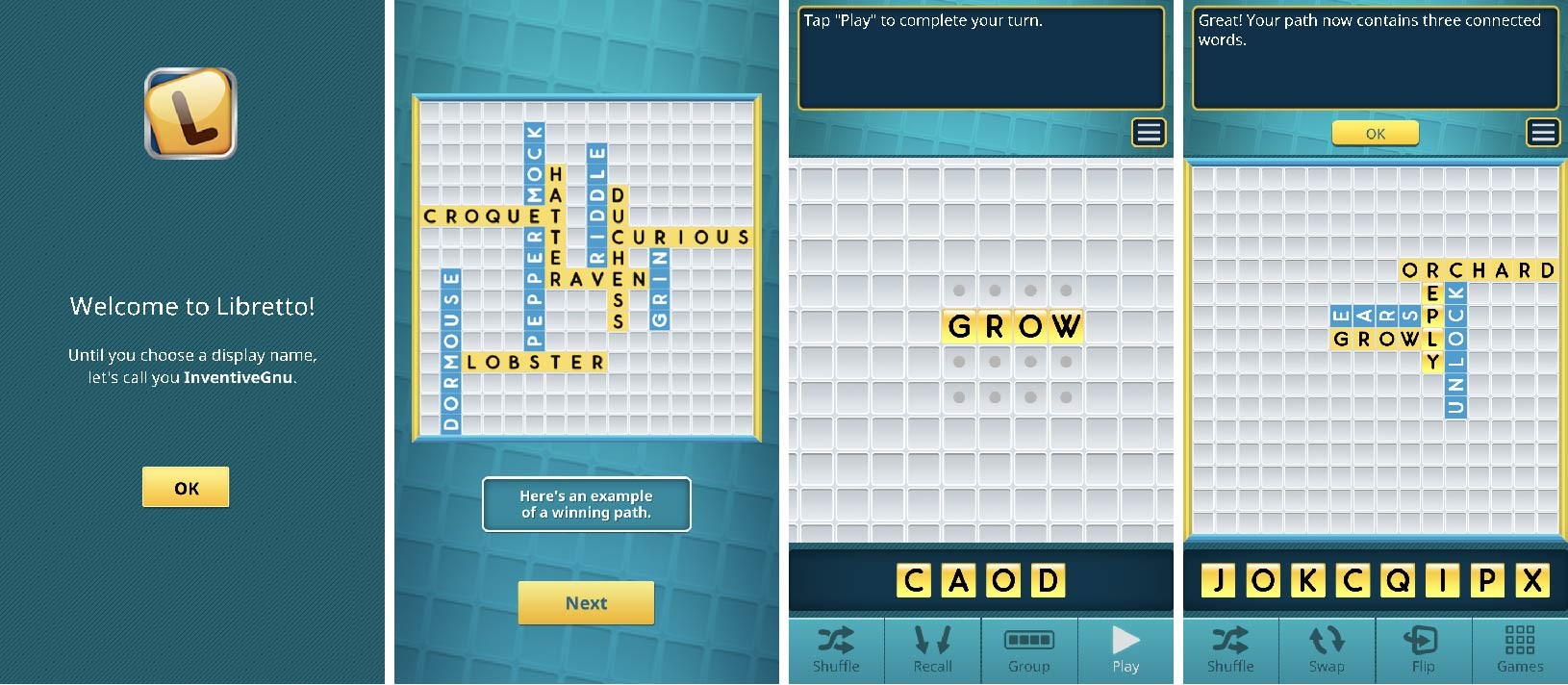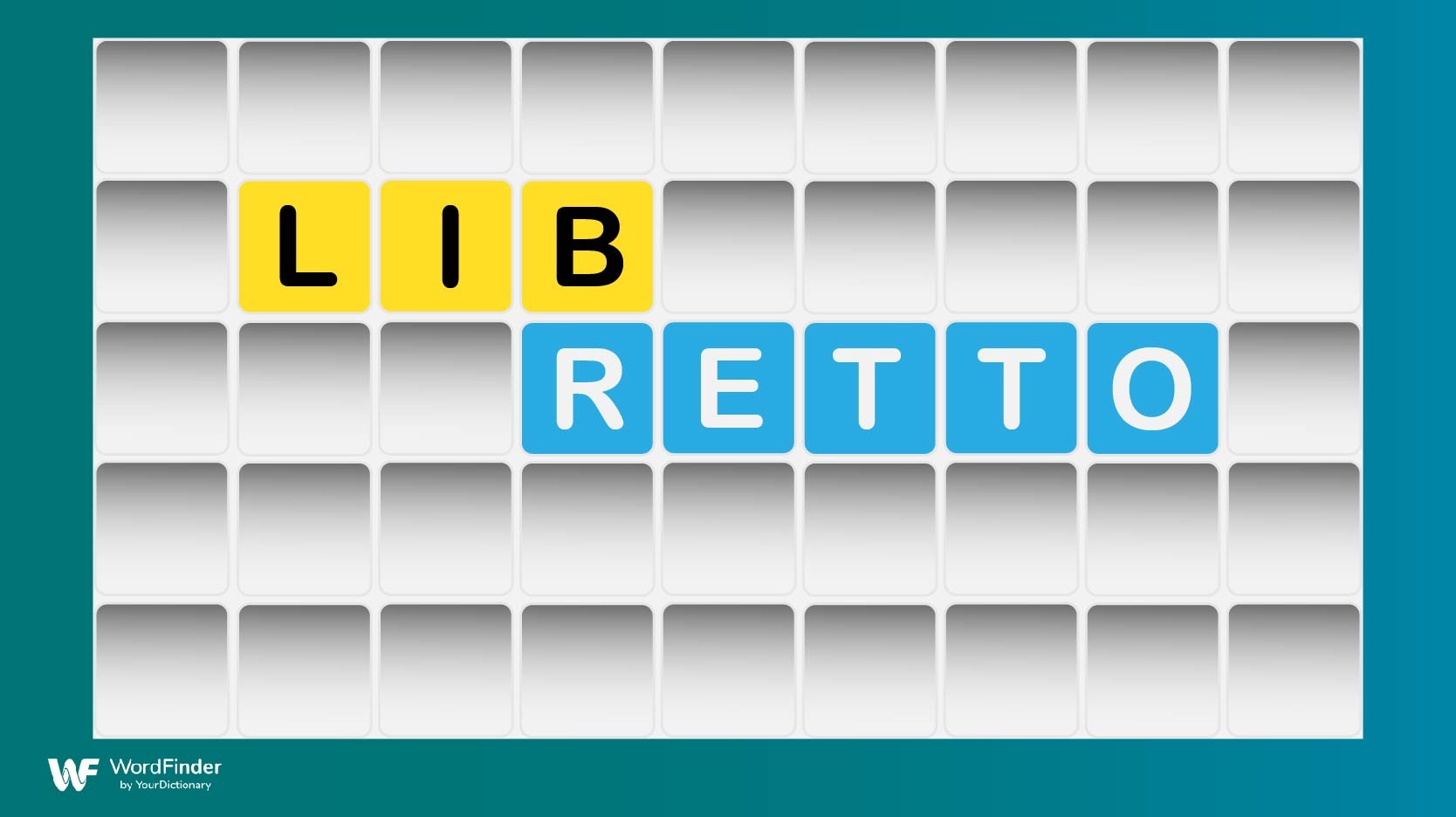How to Play Libretto: The Basics
Libretto is exactly like the other grid-based games you’ve played, except it’s totally different. While it’s true that you play on a grid and use randomly distributed letter tiles to make words, your goal isn’t to score points. Rather, each player needs to create a chain of connected words that stretch from one end of the game board to the opposite end.

Taking Unique Creative Liberties in Libretto
The premise of the game is unusual, and so are the paths you and your opponent must take as you play. As mentioned, you need to move from one end of the grid to the opposite end. For you, that means moving horizontally. For your opponent (at least from your perspective), that means moving vertically.
The ends and letter tiles are also color-coded for each player. Your tile board ends will always be yellow, and your opponent’s will always be blue. This is quite different from games like Words With Friends where everyone's tiles are the same color.
The Chain of Events
The rules for Libretto are fairly simple. The rules take heavy inspiration from Scrabble, so if you’re familiar with how that game works, you’ll feel (mostly) at home playing Libretto.
Each player starts with eight letter tiles. Libretto has no limit for its letter tiles. It supplies new ones each time you find words and play them until the game ends.
The player who goes first must play one word somewhere within the 16 center squares to start.
The next player must play their word. Unlike in Scrabble, words do not need to connect with other words already on the board. If a word you create does connect to another one of your words, though, the connecting letters must form a valid word.
Players continue taking turns. As the game progresses, use your letters either to connect your words in a chain or to block your opponent’s path.
The first player to create a chain of words that leads from one side of the board to the other wins the game.
Libretto Strategies and Tactics
Once you start playing, you might realize that Libretto is more challenging than you first thought it would be. It’s easy to learn at the start, but there isn’t much room for error in an actual match. That’s why you’ll want to commit these essential strategies to memory.
Plan ahead: Immediately playing every word you can spell is a great way to make sure you run out of options later in the game. Plan your route and predict what your opponent will try to do. Be sure to set yourself up for multiple chances to win. If you don’t, your opponent can easily trap you.
Don’t ignore the importance of flipping: Flipping is a special turn-spending strategy. You can take one tile, flip it over, and place it on any spot on the board. It doesn’t count as a letter or part of a word. Instead, it allows you to quickly connect two words. Flipping is something you’ll often do either to complete your chain of words or to block your opponent’s path.
Swap out useless tiles: You want to have as many options as possible at all times. If you have a bunch of tiles and you can’t spell anything, your opponent will quickly overtake you. Do you have too many vowels or too many hard-to-use letters like Q and Z? Burn one of your turns and swap some letters, just like in Scrabble. Make sure you have plenty of options on your next turn.
Create longer words when you can: While it’s not always the case, playing longer words is usually the best option. You cover the most space in one turn, and it restricts the squares your opponent can take with their words. Being able to play the large words is why the next tactic is so beneficial.
Get help from WordFinder: If you find yourself completely stumped on how to use your letters, WordFinder can help keep you in the game. Stop by the WordFinder unscrambler or download the mobile app. Select “All Games” to find every useful word hidden in your tile rack. This is especially helpful when you need a word of a specific length.
Try Another Spin on a Classic Formula
Libretto is a fun reimagining of how the grid-and-tile formula works. That said, it might not be the type of change some people are looking for. If you’re interested in playing a different game that tries something new, give a go with Kryss. Kryss does the same as Libretto and blends the gameplay of crossword puzzles with Scrabble. The major differences are that scores are involved and the matches don’t get as frantic.
Zac Pricener has been a content creator for the past eight years. He’s a bit of an all-around nerd, and he has a bad habit of working movie and TV show references into conversations whenever possible.
